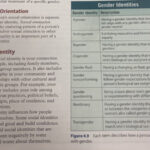Why do we fail to do the good that we know we should? Why do we fall below our own standards? Why do we try so hard to make progress in life and yet have little to really show for it?
In Yoga philosophy, the term Avidya is used to describe the condition that causes this tendency within us. It literally means “incorrect comprehension”; better known as ignorance. According to yoga teachings it is deeply rooted in our being through repeated habit.
We know that any behavior, when repeated often enough, becomes almost instinctive. This is true to such an extent that we can even believe such actions to be outside of our conscious control. The misuse of this “anchoring procedure” is the foundation of avidya.
Examples include unjustified angry reactions to other people, chronic dependencies like alcohol or drugs, or self-sabotage just when we are about to make a life-changing breakthrough in some important area.
The subtle thing about avidya is that it hides itself. It only ever manifests as something else. Its symptoms are everywhere, but the cause itself remains concealed. We see it as “life”, or the other person’s fault, or some recurring self-destructive habit we can’t control. The source itself remains concealed.
Avidya is like a deeply rooted tree with four thick branches. The first branch is called Asmita, or ego. This is the part of us that seeks its own interests.
It considers itself better than others, is bruised when it does not get its own way, and generally causes us to identify with this earthly body and the life it is living. It has no wider perspective than that.
The second branch is called Raga and is best translated as Desire or Attachment. This is the part that constantly wants what it does not have. It desires what it does not really need and seeks to accumulate merely for the sake of it.
It makes us unsatisfied and causes us to continually compare ourselves unfavorably with others. If we are wealthy, we are unhappy because somebody else is wealthier still. And so on…
The third branch is called Dvesa or Refusal. This is like the recoil response. Whatever negative experiences we have had in life make us afraid of repeating them again in case the same result occurs.
It can make us reject people, situations and possibilities that just might cause us pain again. In one person, it may be the fear of forming relationships with the opposite sex. In another, it may be a fear of public speaking as a result of negative childhood experiences.
The fourth and last branch on the tree of Avidya is called Abhinivesa or Fear. These are specifically fears that are NOT caused by previous experience. For example, we may fear change, or growing old, or that we may lose everything we worked so hard to earn. In other words, things we may never have experienced before.
Avidya, in all its subtle forms, works within us constantly to root us in our habitual ways and make improvement difficult or impossible. The more we indulge Avidya, the stronger it becomes. Eventually, we feel that we are no longer the doer of these things; they simply happen to us.
A person can attract one disastrous relationship after another, or continually experience uncontrollable rage under certain stimuli, and feel that it is nothing directly to do with them. It is just bad luck.
The person fails to see that there is only one person responsible for everything that happens! So what can we do? If Avidya obscures and clouds, it clearly must be obscuring something. Yoga philosophy calls this something Purusa.
In the West, we know it as the “Higher Self” or “Silent Observer”; the true divine spirit that lies within each of us. The task therefore, is to bring Purusa out and live from it moment by moment. By doing this, we minimize the effects of the four forms of Avidya.
A Spiritual Master is one who has completely uprooted the tree of Avidya forever and sees things as they really are. Thus, one of the names for the Buddha is “The Awakened One”.
How do we increasingly live from Purusa – the highest within us? The Yoga Sutras of Patanjali suggest three methods…
The first is actual practice of Yoga – both the physical postures and the breathing exercises. If this is something you feel comfortable with, it is definitely worth considering. There are many physical and mental benefits to be gained from a regular practice of Yoga, no matter how simple.
However, be sure to consult your doctor before even contemplating such a regime, especially if you are over 40 and have never done it before. Yoga should only ever be learned in the beginning from a live teacher. Books are helpful as a supplement but should never replace live tuition. Regular Yoga does progressively diminish the force of Avidya in our lives.
The second method is through self-examination. Regular contemplation of our actions and habitual thought patterns will awaken us to take increasing responsibility for our lives. Meditation is one excellent method that can help.
So too can keeping a Journal of our progress. Activities like these can break the habitual stimulus-response cycle , and place that moment of choice back in between the two.
In other words, instead of responding automatically as we usually do, we can choose in that moment to act differently. We become increasingly conscious and responsible, instead of remaining creatures of habit.
The third method is to create a certain detachment to the actions of our life, and almost become an external observer. Rather than being an active participant, taking our hopes and dreams terribly seriously, we become more like an actor in a play, playing the part the best we can.
This form of spiritual detachment does not mean we under-perform in life in any way. It merely means that we become more detached and objective about the movement of our lives; less elated when things go right and less distraught when disaster occurs. In this way the ego, and indeed all aspects of Avidya, are progressively weakened.
In truth, all three methods work best together. However, one or other approach can prove immensely beneficial. For most of us, Avidya will remain to some extent throughout our lives. However, the more we can live from the true spirit within, the Purusa, the more authentically we live our lives.
We relate to others better, make better decisions, and the hold of ignorance upon our lives gradually diminishes. We become the best person we can possibly be and thereby benefit the world. Surely that is the goal of life ?
















